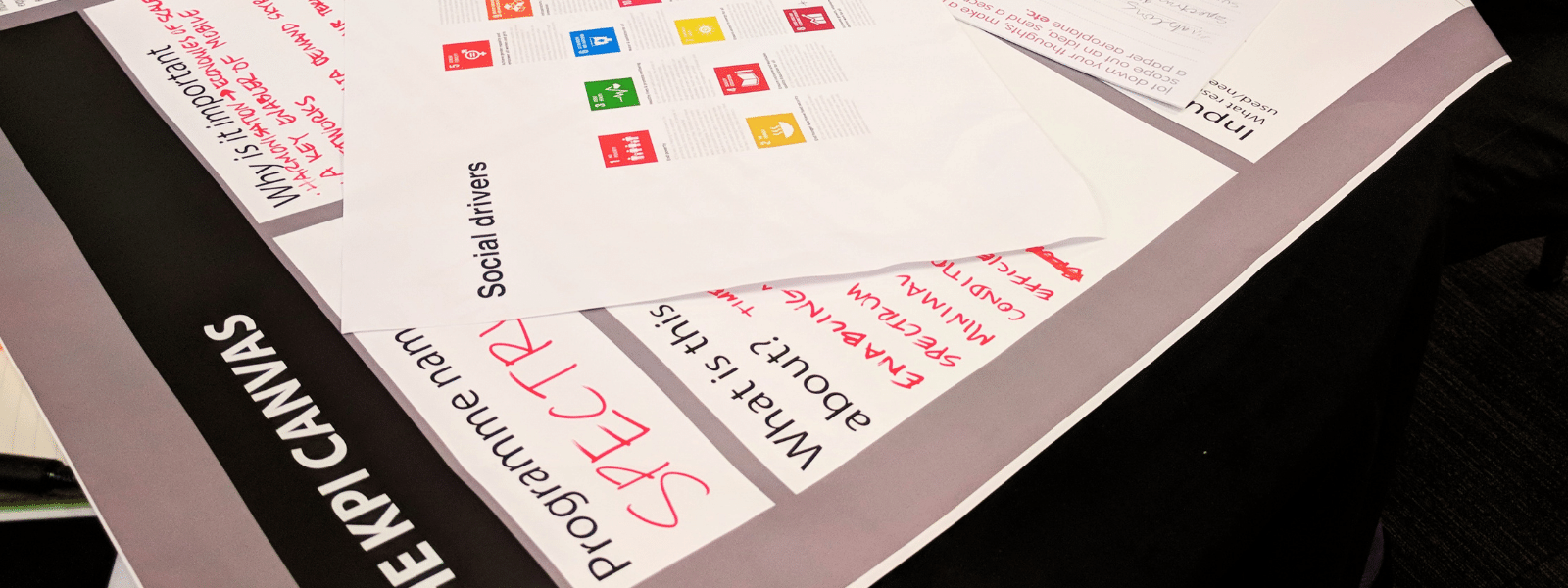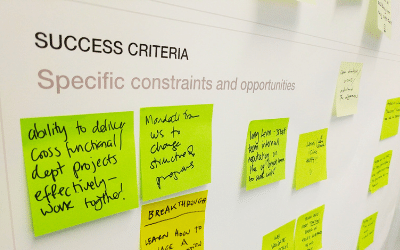What's the key to rally an entire global business behind a single vision?
When you have operations in every single country, worldwide, and a vast spectrum of different activities - how can we make it possible to synchronise every single person and team behind the same vision? And with that scale and diversity, is it possible to quantify overall impact? The key might lie in OKRs.

This global industry association sets strategy and leads policy advocacy on behalf of some of the largest companies in the world, in one of the most influential industries of the digital age.
But with a vast spectrum of activities, each with a different mandate, and a presence in every single country in the world - the mission had become diffuse, and the efforts of different departments were not building on each other. How can I help them to rebuild their rally cry and align all the moving parts - while still keeping enough decentralisation to remain agile and adaptive to a shifting future and nuanced local context?
| The challenge |
On behalf of the Board: 1/ Unite the organisation around a clear vision and concrete mission. 2/ Cascade this through the company, directly linking day-to-day work with the mission. 2/ Find a way to make the value of the organisation's work clear and tangible to their paying members (i.e enormous companies). 4/ And also; embed the Sustainable Development Goals into day-to-day work. |
| Insights & mind shifts |
🔗 Metrics are the train tracks that operationalise a vision (reframing the brief): The original brief did not mandate a solution; the ideas floated were mostly internal workflow tools or apps. But it didn't take long to find the key to change here. My team quickly learned that if employees or departments seem off-track from the company mission, looking at their OKRs could reveal why; they are the language that should connect overall strategy to day-to-day actions - but often they drive behaviour in a different direction. Through early research and stakeholder interviews, we determined that the current team OKRs weren't actually linked upward to the goals of programs/departments; and many programs had complex, intangible outcomes that were difficult to measure. And the goals of those programmes in turn were not tightly linked to an overall mission. The most effective way to fulfil the brief would be to identify a new set of OKRs (aka KPIs, metrics) that supported and quantified progress toward the overall mission; and as a pilot learning project, to cascade linked metrics through the first four management tiers and major regions. 📣 Your vision is your rally cry. A clear vision and concrete mission are critical tools to successfully decentralise strategy and instil a sense of shared purpose. However, from the first session, it was clear even the relatively tight-knit management team had different ideas of what they were trying to achieve. By bringing representatives from throughout the company together to co-create and define clear, tangible statements of vision and mission, my team saw a near-instant step-change; from disengaged employees who felt undervalued and in competition with other departments, to an enthusiastic and empowered team powering along a shared path. The company mission became something employees felt they truly owned. 👀 What gets measured gets managed; is that why are OKRs are leading the strategy? Digging deeper into departments, regions, and board reports, I found that those metrics that could be easily valued and have a dollar figure applied to them tend to get more budget and more visibility with the board; simply because they were easier to communicate. That was effectively dictating the strategy. However this didn't give management, or the board a clear idea of what was actually happening or, critically, what activities were making an impact. By finding a way to untangle complex attribution and quantify indirect, intangible activities and impacts - like policy and advocacy, and sustainability work contributing to the SDGs, we increased transparency across programs and helped management objectively apply resources. 💬 Use metrics as frequent, calibrating feedback loops; not to monitor employee performance. There's a critical difference here; innovative companies carefully select their metrics to monitor, iterate and communicate, creating a culture of healthy experimentation and evidence-based decision-making. If measurement happens too infrequently or focuses too heavily on judging team performance - it creates a culture of fear and information opacity, with teams only reporting on what looks good. Working 1:1 with teams to define success, and find the most relevant and timely (not the most convenient) way to measure began to shift that culture. |
| Results |
🤝 Increased velocity, alignment, and innovation. I worked with the Senior Leadership Team to set up a new cross-departmental support team to help programs monitor. With faster, more objective measurement, the culture began to shift toward evidence-based decisions, small bets, iterations and transparency, replacing fear-of-failure, and allowing the whole company to move faster and respond to member needs with more agility. 🎪 Renewed sense of purpose and belonging (translating to the bottom line.) The change in employee engagement was marked; they reported a greater sense of purpose and personal meaning when their work was clearly linked to the overall mission. The ability to give important intangible outcomes the same airtime and attention as profit by quantifying in $ also increased synchronicity between departments. In this case, management innovation and organisational design empowered a business and cultural transformation. 🎁 Membership growth and decreased churn: by being better able to communicate value internally, the Association could more tangibly and accurately communicate their impact to the members they serve, in turn reinforcing the value and relevancy of the organisation. Members reported that the new way of communicating results helped them to see a clear link between the Association's activities and how these contributed to their own success. |






